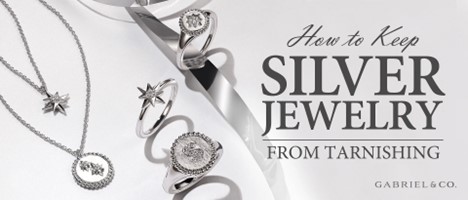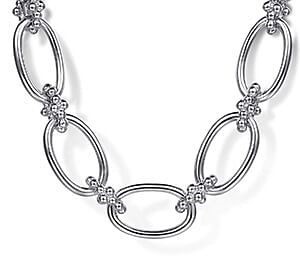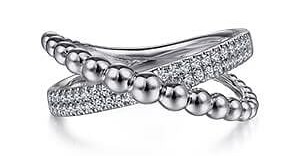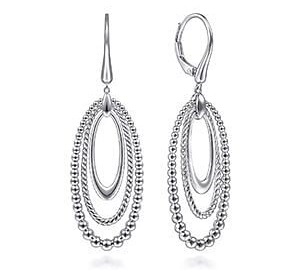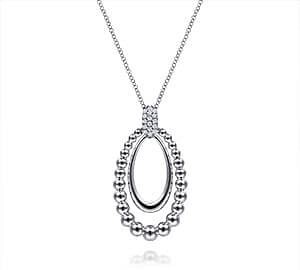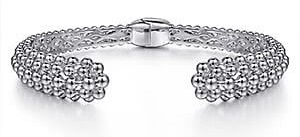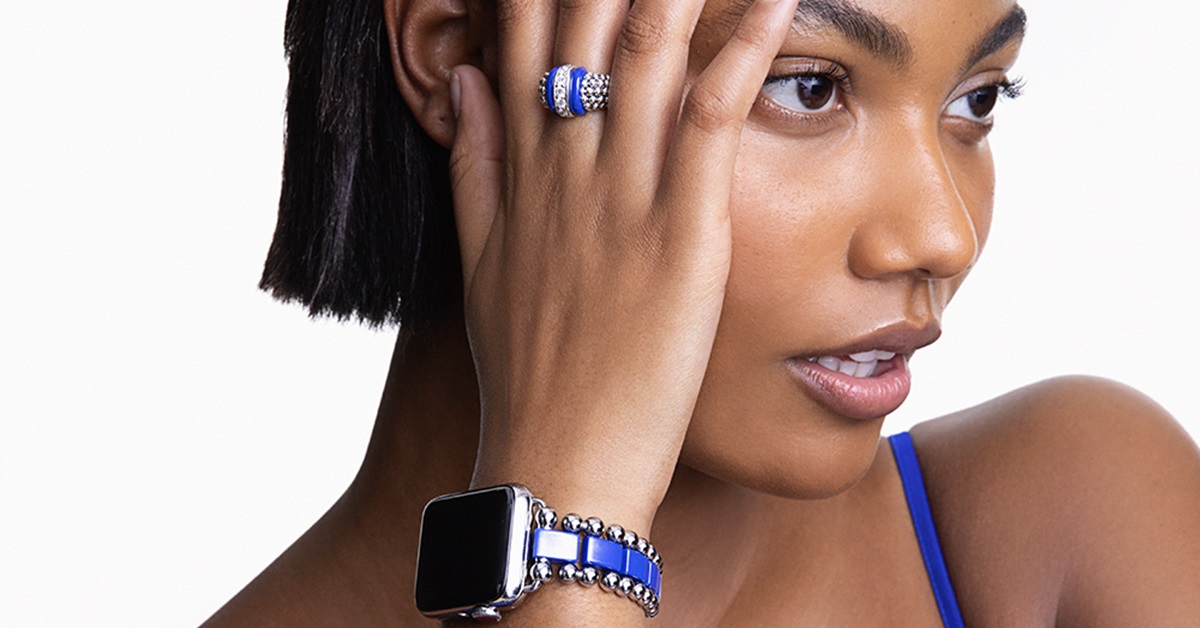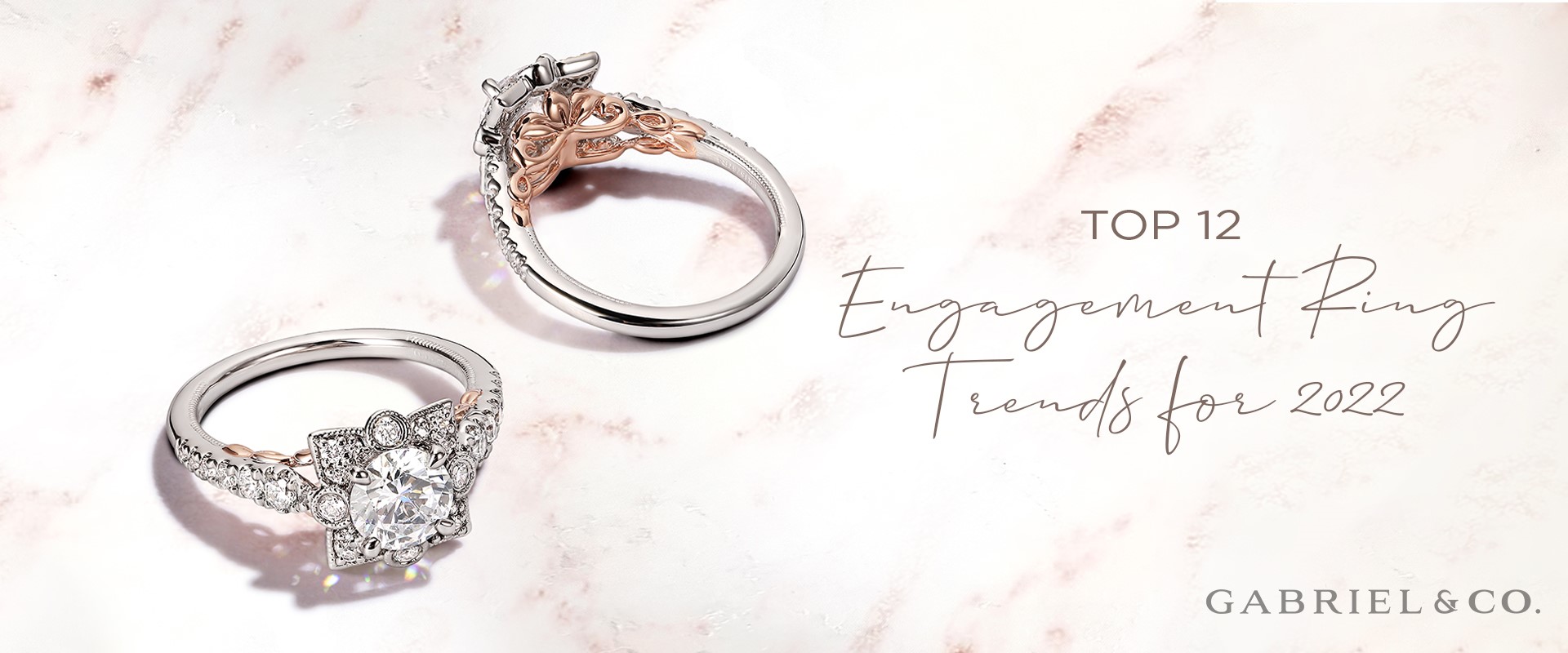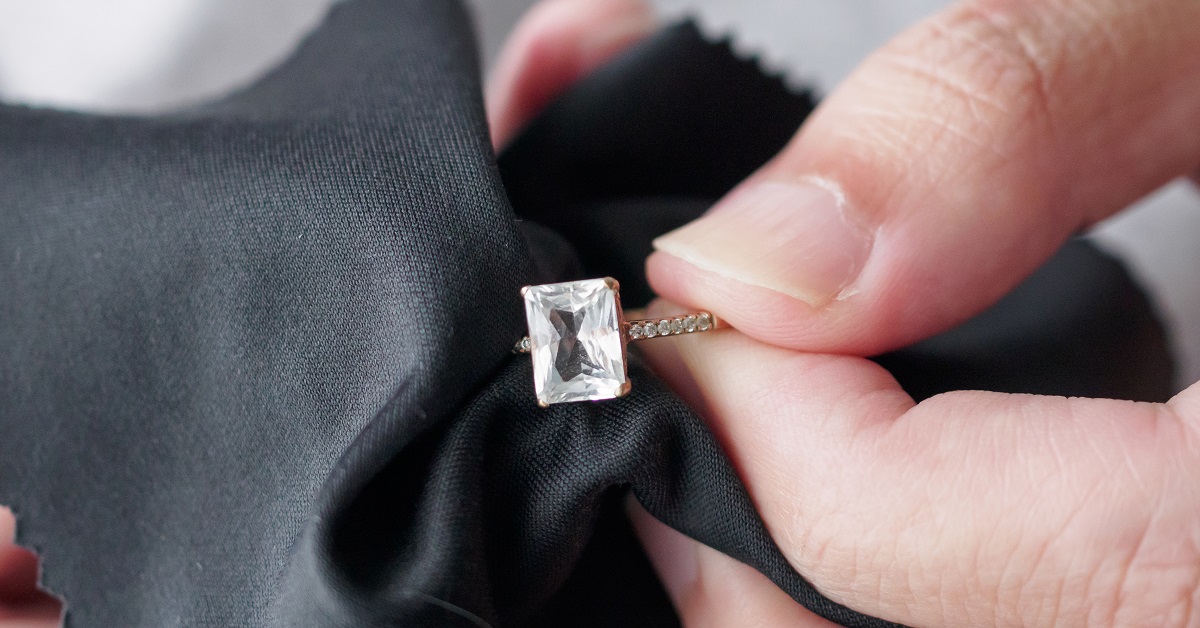How many times have you rummaged through your jewelry collection to pull out your favorite silver necklace, only to find it turned a shade darker than the last time? Unfortunately, it is not dust or dirt, that can be wiped off with a wet cloth; your silver jewelry has tarnished. As perplexing as it sounds, the boiled eggs that you love to have in your breakfast tarnish too. Keep reading as we unveil this interesting fact, the causes behind silver tarnishing, and effective ways to prevent it.
Sterling silver jewelry has a distinct beauty and appeal that is hard to miss, thanks to its smart sophistication and effortless vibe. A holistic (read enviable) jewelry collection is one that boasts a balance of different metals like gold, platinum, and silver. Not only is silver jewelry versatile enough to enhance any look – formal or casual, but it is also highly cost-effective and durable. Even with a friendly price point, it is brilliant to wear for any occasion and amidst any social gathering for its snob-defying appeal. However, it is sacrosanct to maintain your silver jewelry properly to keep it from tarnishing and preserve its pristine, shiny luster forever.
Difference Between Pure Silver & 925 Sterling Silver
Pure silver metal does not tarnish or rust. But unfortunately, 100 percent pure silver is too delicate and fragile to be fashioned into jewelry. To strengthen its attributes, the metal is alloyed with other metals, mostly copper, in the proportion of 92.5 percent pure silver to 7.5 percent copper to achieve ‘925 Sterling Silver,’ a metal perfect to be molded into jewelry. Its strength, beauty, and affordability contribute to its popularity as a jewelry metal for both men and women. 925 sterling silver is malleable and easy to work with, compared to pure silver, making it great for creating intricate designs and nuanced details.
Does 925 Sterling Silver Tarnish?
 Yes, sterling silver is susceptible to tarnishing over time, but the good news is proper care and storage can considerably reduce and slow down the process. So, what exactly is tarnishing? Tarnish is a kind of oxidation that happens when silver comes into contact with sulfur-containing gases, which could be present in air molecules or emitted by certain substances. The resulting chemical reaction produces a silver sulfide compound, which coats the metal’s surface with a thin, black-colored film. Moreover, interaction with oils, cosmetics, water, and a few other substances accelerates the process and causes discoloration. Even wrapping the jewelry in printed paper or tissue paper which contains sulfur-based dyes, can tarnish it. Rubber bands, exhaust, leather, and cellophane can all speed up the process of tarnishing.
Yes, sterling silver is susceptible to tarnishing over time, but the good news is proper care and storage can considerably reduce and slow down the process. So, what exactly is tarnishing? Tarnish is a kind of oxidation that happens when silver comes into contact with sulfur-containing gases, which could be present in air molecules or emitted by certain substances. The resulting chemical reaction produces a silver sulfide compound, which coats the metal’s surface with a thin, black-colored film. Moreover, interaction with oils, cosmetics, water, and a few other substances accelerates the process and causes discoloration. Even wrapping the jewelry in printed paper or tissue paper which contains sulfur-based dyes, can tarnish it. Rubber bands, exhaust, leather, and cellophane can all speed up the process of tarnishing.
Now, let us answer the question – why sterling silver tarnishes but pure silver does not? Well, the copper in the alloy causes the oxidation; more copper causes more tarnishing – a reason to always look for 925 sterling silver (the most high-quality silver for jewelry) and not an adulterated silver alloy that has higher concentrations of copper. If you ever wonder why the Statue of Liberty seems a light bluish-green, then it is because of the oxidation of the copper metal that the iconic monument is made of. Lady Liberty was originally a dark orange-red hue, the typical copper color when the French gifted it to America. Interesting, right?
Is Tarnish Different from Rust?
Both are natural processes, but tarnish does not damage the silver beneath, while rusting wears off and erodes the metal. Rusting usually happens to iron, while silver only tarnishes and does not rust. Silver tarnishing occurs only at the surface level and can easily be reversed with polishing and cleaning techniques. Rusting, on the other hand, spreads and deteriorates the metal at a deeper level. The metal keeps chipping away, eventually becoming fragile and brittle.
How Quickly Does Silver Jewelry Tarnish?
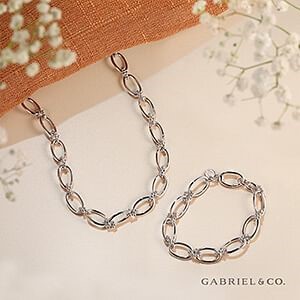 The speed at which your silver jewelry tarnishes and discolors depends entirely on the frequency and concentration of sulfate gases it comes in contact with. If you keep the jewelry open in the air with very high levels of sulfate-releasing gases, your silver jewelry can tarnish within a couple of hours. But if you store it in a dry place with no moisture, sunlight, or air, the jewelry will not tarnish, even for years.
The speed at which your silver jewelry tarnishes and discolors depends entirely on the frequency and concentration of sulfate gases it comes in contact with. If you keep the jewelry open in the air with very high levels of sulfate-releasing gases, your silver jewelry can tarnish within a couple of hours. But if you store it in a dry place with no moisture, sunlight, or air, the jewelry will not tarnish, even for years.
How Does Tarnishing Impact the Color of Silver Jewelry?
Looking at the color of your silver jewelry, you can determine to what extent it has tarnished. Not all tarnished silver jewelry is black – some appear yellow-brown, brown-red, and even blue. This varying color of the tarnished silver is credited to a phenomenon called ‘thin film interference.’ The color of the tarnish is a combination of the different lights reflected by the two surfaces on which the incoming light falls – the topmost surface of the tarnish and the original silver beneath the tarnish layers. As the thickness of the tarnish changes, the proportion of the final light being refracted from these two surfaces also changes. When the tarnishing of the silver jewelry begins, the layer is really thin, and the jewelry color changes to yellow-brown; as the layer grows thicker, it adopts a more reddish hue, eventually turning blue. When the thickness of the tarnish reaches its maximum intensity, the color turns black, which is the actual color of the chemical compound, silver sulfide, that causes the tarnish.
How to Keep Silver from Tarnishing?
The fact that silver jewelry can tarnish does not mean you should refrain from buying and wearing this beautiful metal. The best way to keep sterling silver from tarnishing is to take proper care of it. This includes restricting contact with water, chemicals, and other elements. It is also important to store the jewelry separately in airtight packaging and avoid exposure to extreme temperatures. Read below to learn more.
- Keep Away from Moisture
Your jewelry may be more vulnerable to tarnishing in water and humidity. Therefore, sterling silver jewelry should be kept in a cool, dry location like a container, jewelry box, or airtight bag. Also, before you put it in the package, all air must be drawn out so that no oxidation can occur.
A common hack not discussed much is adding a few bits of chalk to your silver jewelry during storage. This absorbs any moisture and helps prevent tarnishing. To avoid potential scratching and tangling, store your jewelry pieces separately.
- Invest in Silver Care Products
Many silver maintenance solutions are available that inhibit or slow down the tarnishing process and keep your silver jewelry gleaming. Some popular silver care products include silver polishing cloths, silver polishes, silver tarnish inhibitors, and silver dips. These products are specially designed to help remove signs of tarnishing from silver jewelry. The silver jewelry polishing cloths and silver polish contain chemical compounds that help keep your silver jewelry shining and restore its original luster. Apart from these, get your silver jewelry regularly polished and cleaned by a professional jeweler.
- Keep Harsh Chemicals at Bay
Sulfates are abundant in hairsprays, shampoos, lotions, and perfumes. Whether it’s through airborne particles or residue on your hands, when these sulfates come into contact with silver, they form silver sulfide compounds and tarnish the jewelry.
Follow the golden rule – ‘it should be the last item to put on and first to be taken off.’
To simplify, make sure you put on your silver jewelry after you’re completely dressed to avoid makeup particles or perfume coming into contact with it, and ensure that it’s the first thing you remove (yes, even before your makeup). Avoid touching the jewelry with lotion on your hands or while handling makeup.
NK7094SVJJJ925 Sterling Silver Bujukan Link Chain Necklace
- Clean Sterling Silver at the Very Initial Stage of Tarnishing
Waiting until your sterling silver jewelry is significantly tarnished is not recommended, as getting rid of sulfide layers accumulated over the years can be challenging. Even professional cleaning techniques may not be able to restore the original appearance. Rather, clean it the moment you notice the first signs of tarnish beginning to develop. This will keep your jewelry looking new and maintain its luster.
- Wear It Often
Yes, you read that right. Saving your silver jewelry only for special occasions may speed up tarnishing. Whereas wearing it often can keep it looking lustrous for posterity. Confused? The natural oils in your skin protect the silver jewelry from interacting with the sulfur-producing gases in the air, thereby preventing tarnishing and maintaining the metal’s natural shine.
Guide to Styling Silver Jewelry for Different Moods and Occasions
For endless reasons, sterling silver has been and will continue to be one of the top-selling metals. Since it is a durable metal, it will preserve its quality even when worn daily. The metal is resistant to scratches and doesn’t bend, buckle, or twist out of shape – it can’t get better than this for a jewelry metal.
LR51900SVJWS
925 Sterling Silver White Sapphire Bujukan Criss Cross Ring
Exude confidence in the boardroom by classing up a dull, formal outfit with a sterling silver criss-cross ring. The band of scintillating pavé white sapphires complemented with diagonally placed silver spheres is sure to command attention with every handshake.
EG14171SVJJJ
925 Sterling Silver Bujukan and Rope Drop Earrings
If you want to channel your inner princess, pairing your evening ball gown with silver drop earrings is the way to go. Walk into the room and leave everyone mesmerized with three oval silhouettes of different sizes – a polished loop nestled inside a rope of twisted silver and a chain of silver spheres.
NK6545SVJWS
925 Sterling Silver White Sapphire Pendant Necklace
A sapphire pendant necklace combined with silver studs is the ideal addition to your little black dress for a night out on the town. Since this is one of the most versatile jewelry pieces, you can pair the same combo with your white linen dress to create a beautiful aesthetic brunch look.
BG4592-62SVJJJ
Sterling Silver Bujukan Beaded Split Bangle
Stacking silver bracelets is a fantastic method to create an eye-catching Pinterest-worthy look. You can either combine it with identical bracelets or add a complementary watch to elevate your style.
Now back to the fun fact we started with. Yes, your boiled eggs tarnish the same way as silver jewelry. When the eggs are heated, their protein releases a sulfur-containing gas called hydrogen sulfide. Upon reaction with zinc in the egg yolk, the gas forms zinc sulfide, which causes the egg to tarnish. Once over-boiled, the brown-black layer you see on the egg yolk is the same tarnish.
If you take care of your silver jewelry well, it can last you a lifetime in all its original glory. At Gabriel & Co., we offer an extensive collection of 925 sterling silver jewelry for both men and women. Shop our designs and add style and glamour to your every ensemble.


